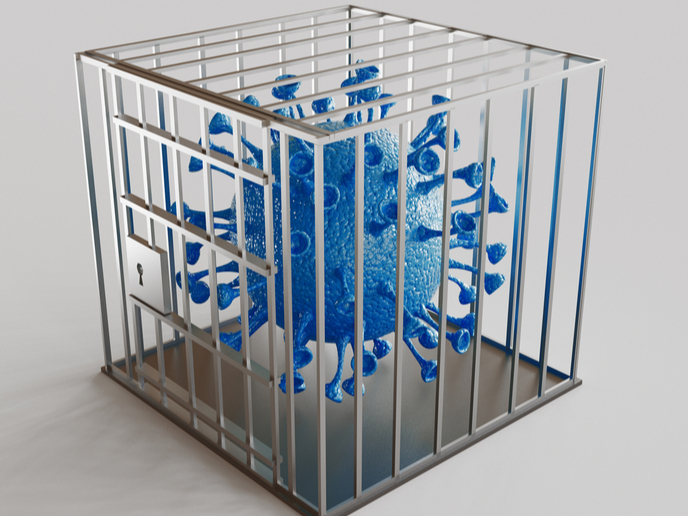Neutralising viruses with DNA origami traps
If you’ve been paying attention to news on antibiotic resistance in recent years, you’ll be well aware that antibiotics fight bacteria, not viruses. So then how are viral diseases treated? The truth is, there aren’t any effective treatments for most viral infections. This is what a team of researchers from Germany and the United States are now striving to change with their novel treatment strategy. Supported by the EU-funded VIROFIGHT and DNA ORIGAMI MOTORS projects, the researchers have developed nanoscale shells made of DNA that trap viruses and stop them from interacting with host cells. The method used to neutralise viruses is called the DNA origami method that basically involves folding DNA to create 3D shapes at the nanoscale. The research results have been published in the journal ‘Nature Materials’. The nanosized virus traps are in the shape of an icosahedron made up of 20 triangular surfaces. Molecules lining the insides of these shapes bind to the viruses, helping them contain the virus. The research team varied the binding points on the edges of the triangular surfaces to create closed hollow spheres and spheres with openings, or half-shells. “Even a simple half-shell of the right size shows a measurable reduction in virus activity,” noted study senior author Prof. Dr Hendrik Dietz of the Technical University of Munich (TUM) in a news release posted on the university’s website. “If we put five binding sites for the virus on the inside, for example suitable antibodies, we can already block the virus by 80 percent, if we incorporate more, we achieve complete blocking.”
Successful trap for two viruses
Through cell culture testing with mouse serum, human cells and viruses, the scientists discovered that their virus traps were able to successfully capture viruses before they could bind to human cells. The DNA nanostructures remained stable in the mouse serum for 24 hours and trapped 2 virus types, namely adeno-associated viruses and hepatitis B, stopping them from infecting the human cells in the serum. “We are very confident that this material will also be well tolerated by the human body,” stated Prof. Dr Dietz. Study co-author Prof. Dr Ulrike Protzer, also of TUM, explained how treatments against bacteria and viruses differ. “Bacteria have a metabolism. We can attack them in different ways,” she observed. “Viruses, on the other hand, do not have their own metabolism, which is why antiviral drugs are almost always targeted against a specific enzyme in a single virus. Such a development takes time. If the idea of simply mechanically eliminating viruses can be realized, this would be widely applicable and thus an important breakthrough, especially for newly emerging viruses.” According to Prof. Dr Dietz, this technology paves the way for other medical uses, too. “It would also be conceivable to use it as a multivalent antigen carrier for vaccinations, as a DNA or RNA carrier for gene therapy or as a transport vehicle for drugs,” he reported. Next, the team aims to test the virus traps inside living mice. TUM is the coordinator of both VIROFIGHT (General-purpose virus-neutralizing engulfing shells with modular target-specificity) and DNA ORIGAMI MOTORS (Constructing and powering nanoscale DNA origami motors). The first project ends in 2024 and the second in 2022. For more information, please see: VIROFIGHT project DNA ORIGAMI MOTORS project
Keywords
VIROFIGHT, DNA ORIGAMI MOTORS, virus, DNA, cell, DNA origami, origami, viral infection



